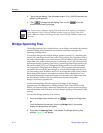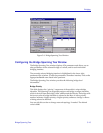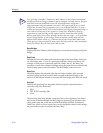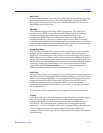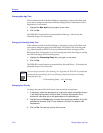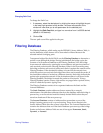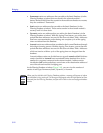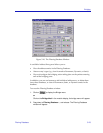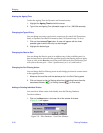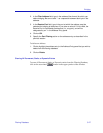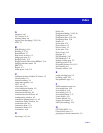
Bridging
5-22 Filtering Database
• Permanent entries are addresses that you add to the Static Database (via the
Filtering Database window) that are stored in the selected module’s
battery-backed RAM. Since they remain in the module on shutdown or restart,
they are considered “Permanent.”
• Static entries are addresses that you add to the Static Database (via the
Filtering Database window). These entries remain in the selected module’s
memory until it is shut down.
• Dynamic entries are addresses that you add to the Static Database (via the
Filtering Database window). With the Ageing Time feature, you set the time
period that these addresses are saved in the Source Address Table. Addresses
that have not transmitted a packet during one complete cycle of the ageing
timer are deleted from the database.
• Learned entries are addresses that are added to the Learned Database through
the bridge’s learning process. With the Ageing Time feature, you set the time
period that these addresses are saved in the Source Address Table. Addresses
which are inactive within a cycle of the ageing timer are dropped from the
database.
Learned address entries are divided into two types, Learned and Self. Address
entries classified as Learned have transmitted frames destined for a device
attached to a segment connected to the selected module. Address entries
classified as Self are those that have sent a frame with a destination address of
one of the selected module’s bridging port.
At the Filtering Database window (Figure 5-10), you can view the number of
entries of each type: Permanent, Static, Dynamic, or Learned.
NOTE
When you first initialize the Filtering Database window, a message will appear to inform
you that data is being retrieved. The message will disappear when all information has been
returned from the Filtering Database, and you will be able to view and configure database
entries.



